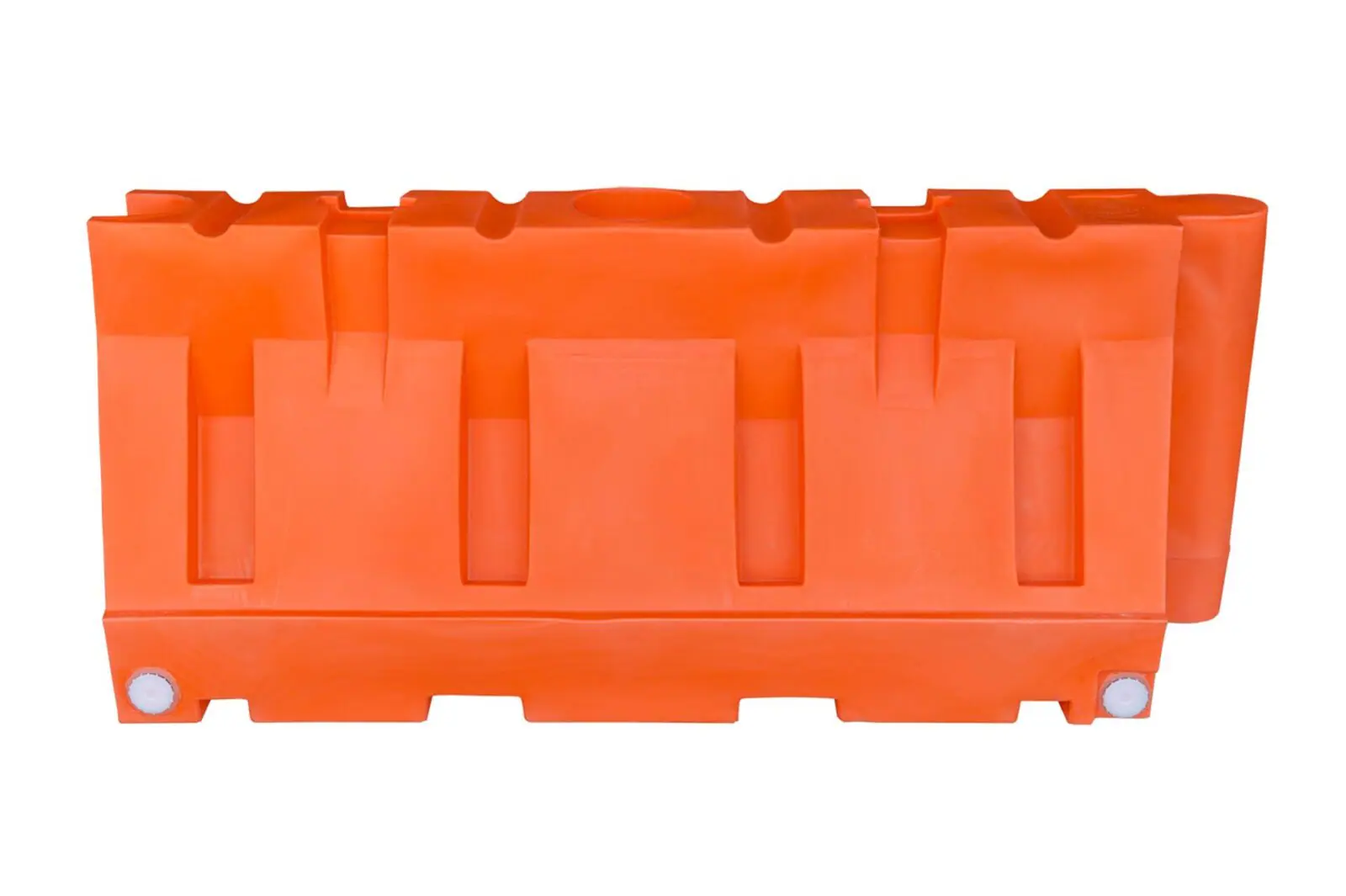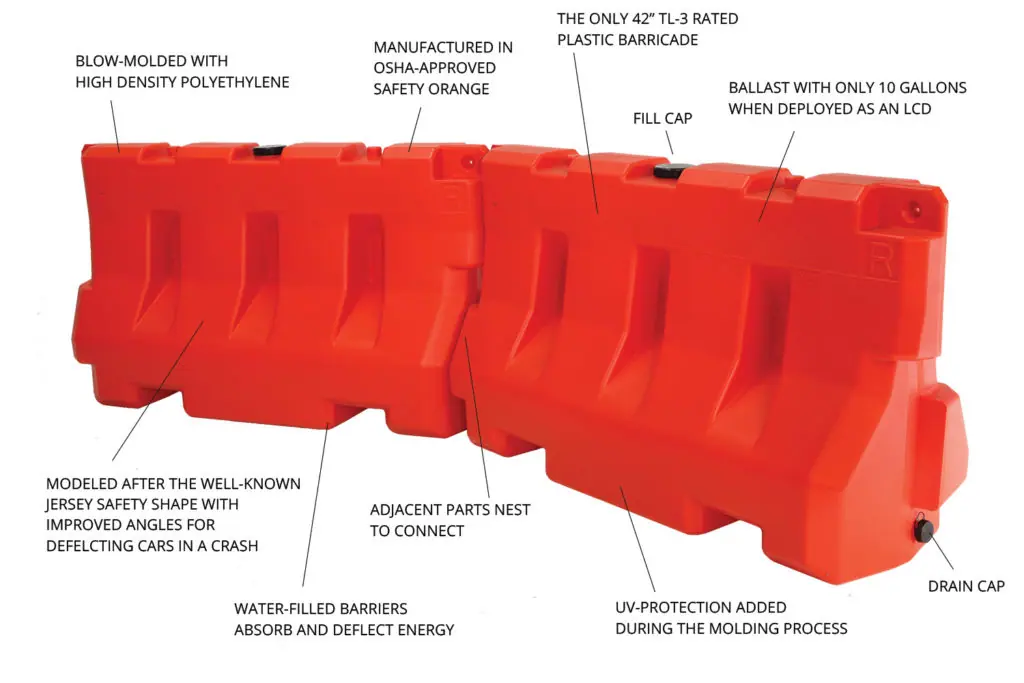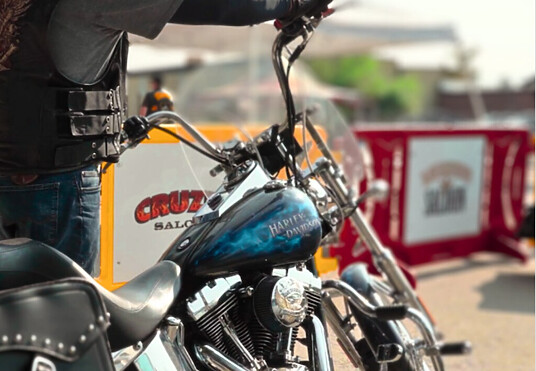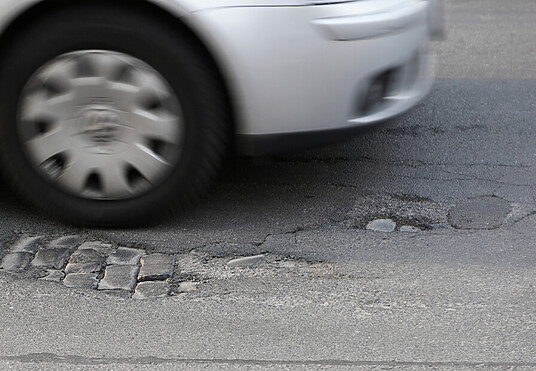The Dangers of Inattention in Roadside Work Zones

April is Distracted Driver Awareness Month
Each year the number of fatalities and injuries remains high as distracted driving takes its toll across the nation – one place distracted driving is especially deadly is in roadside work zones. Fast speeds and inattentive eyes create a combo that safety professionals are working hard to overcome.
As OTW is dedicated to safety in all spaces, we hope to be a part of the solution in reducing the rates of accidents in road and highway work zones. The month of April is dedicated to bringing awareness to the dangers of inattention in and around roadside work zones.
Work zone crash numbers are heavy.
A work zone crash can be defined as a crash taking place within the boundaries, or in an approach to or exit from, a work zone or road construction site.1 The Bureau of Labor Statistics (BLS) defines a road construction site as “a location of construction, maintenance, and utility work on a road, street, or highway”.2
The numbers speak for themselves: 2021 saw the highest number of work zone fatalities in 17 years. That year, over 105,000 work zone crashes occurred, resulting in 42,000+ injuries and 954 fatalities. The Governor’s Highway Safety Association (GHSA) projected that the U.S. pedestrian fatality rate jumped an unprecedented 21% from 2019. A prior study found that 38% of pedestrian fatalities in work zones were workers (i.e. road construction/maintenance, utility, and planning/surveying workers). Working on foot along our roadways is dangerous at best, and fatal at worst.
What’s the solution? How can we work together to help make roadside work zones safer?
On an individual level
The best way to help avoid work zone accidents and fatalities is to prevent them in the first place. The first step towards decreasing inattention on the road is understanding the risks that come along with it: eating or drinking, using an electronic device, focusing on passengers, or driving while drowsy all fall under the category of “riskiest distractions” and can easily cause accidents.
You might stop yourself from driving distracted by:
- Turning off your phone or setting it to the “drive” focus while you’re on the road and stowing it out of reach.
- Preparing for your trip beforehand by choosing music, setting your climate controls, and plugging in your GPS route in advance.
- Being aware of the road and spotting distracted drivers around you (and pulling over and calling 3-1-1 if you believe they are a danger to others).
- Securing projectiles – including but not limited to – pets, bags, water bottles, and groceries.
- Checking out this PDF by the Governer’s Highway Safety Association for more tips for managing driver distraction.
You could also participate in the upcoming National Work Zone Awareness Week – April 15-19, 2024. NWZAW was created to encourage safe driving through highway work zones: it is an annual campaign held at the beginning of the construction season in the hope that drivers would use extra caution when they see roadside work areas. This year will be hosted by the Maryland Department of Transportation (MDOT); follow along with our socials or the NWZAW website to learn how to participate.
On a collective level
Many agencies are working towards safer roads and better work zone safety. There are several initiatives in place (like the Safe System Approach and the National Roadway Safety Strategy by the U.S. DOT) to help significantly reduce serious injuries and deaths on US roads, thus protecting construction workers as they labor on roadsides next to fast-moving vehicles.
Positive Protection
One system that has been in place for some time is known as “positive protection” and can be defined as safety measures “between workers and motorized traffic that “contain and/or redirect vehicles and meet applicable crashworthiness criteria (currently, MASH 2016)”3. Positive protection can include several types of barriers. Among these are moveable and temporary barriers such as traditional concrete barriers, moveable steel barriers, associated cushions, longitudinal channelizing devices, and other strategies such as full road closure, to avoid traffic accidents in work zones.
Creating temporary barriers such as these helps remove crews from the immediate vicinity of moving vehicles by a physical barrier, yet allows them [barriers] to be quickly removed once work is complete. While not a failsafe, these measures keep workers much safer than if there was no separation between work zones and active driving lanes.
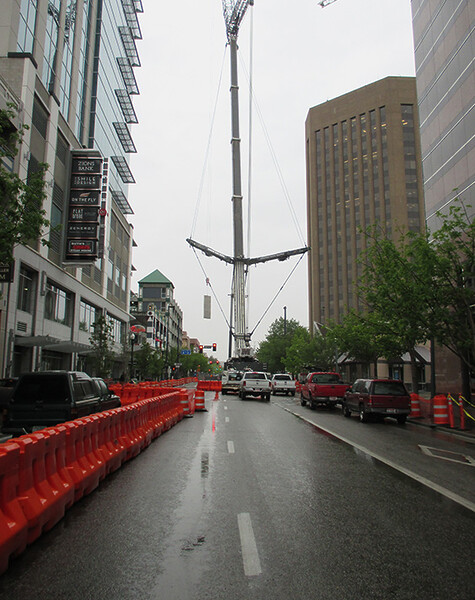
Positive protection using OTW 42″ LCD Jersey Barriers
Technological advances in safety measures
The Minnesota Department of Transportation has been deep in research on ways to reduce or eliminate the need for human flaggers at entrances to work zones. MnDOT researchers are hopeful about the success of their findings, but, as with any more testing and research must be done before we see it on the roads. Funding for projects like this is provided through university boards, concerned stakeholders, and the Strengthening Mobility and Revolutionizing Transportation (SMART) Grants Program. Continued funding means that technological advances in roadway safety measures can continue to be found.
Vision Zero
An approach to road safety that was first implemented in Sweden in the 1990s and is gaining traction in the US now, Vision Zero is “a strategy to eliminate all traffic fatalities and severe injuries, while increasing safe, healthy, equitable mobility for all”. Where traditional approaches might consider some loss of life inevitable, Vision Zero looks to a future where there are zero deaths caused by traffic collisions. Through this fundamentally different way of approaching traffic safety, the goal is to prioritize it as a public health issue and make the streets safer for everyone.
The goal? Safer roads for all.
Hoboken, New Jersey, has successfully implemented the Vision Zero framework, and is touted as a national model for roadway safety – they haven’t had a traffic-related death since January 2017. Their plan has multiple elements, such as lowering speeds and staggering traffic lights, but daylighting (the removal of parking spaces near intersections to increase visibility) is widely regarded as the most impactful reason fatalities have dropped to zero.
While many cities are working to implement this approach, we can start where we are to help reduce roadway accidents and fatalities. Simply put, don’t drive distracted! Nobody thinks it will be them, but statistics show that distracted driving is one of the deadliest things on the road.
Whether you’re on a highway, next to an active work zone, or driving through an intersection, you can make a difference by driving aware and driving safely.
Let’s work together to get to zero fatalities on the road.
Sources:
- Work Zones. Motor Vehicle Safety Issues. National Safety Council Injury Facts: Website.
- Pegula, S. Fatal Occupational Injuries at Road Construction Sites. In Monthly Labor Review, December 2004, pp. 43-47.
- An online guide to reducing work zone intrusions using positive protection. Positive Protection – What are Positive Protection Barriers? (n.d.). https://www.workzonebarriers.com/definition.html
As seen above
32″ Multi-Purpose Plastic Jersey Barricade
32-inch Jersey Safety Shape Barricade
Not all barricades are created equal! OTW Safety goes the extra mile in development, design, and manufacturing to produce the best safety equipment on the market. Because different projects call for different products, OTW provides barricades in a variety of heights and weights to match your project requirements. Available in two weights, the JSS32x72 Jersey Barricade ensures dependability for every application.42″ Jersey Shape LCD
Plastic Jersey Barriers
The impact of construction zone collisions reaches beyond material loss. Accidents in work zones are often fatal and this reality was the driving force in developing the OTW Traffic LCD Barricade. We designed it to help mitigate the risks drivers and work crews face each day. The 42-inch Jersey Shape LCD is the second iteration of our JSS LCD product and boasts enhanced features to make the barricade more versatile while continuing to meet stringent safety standards.